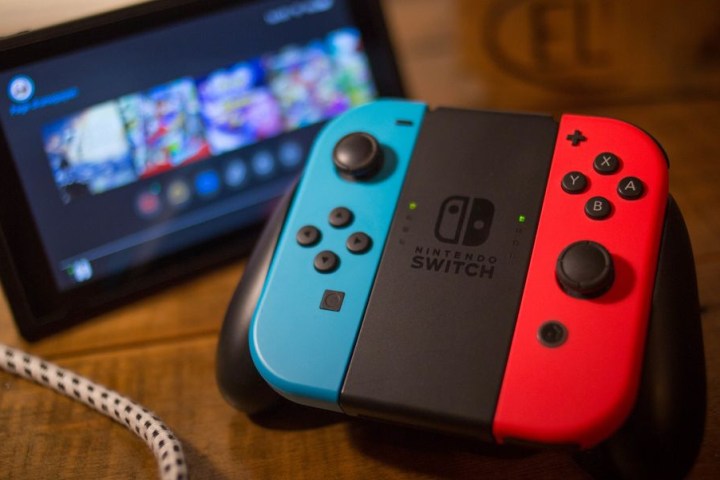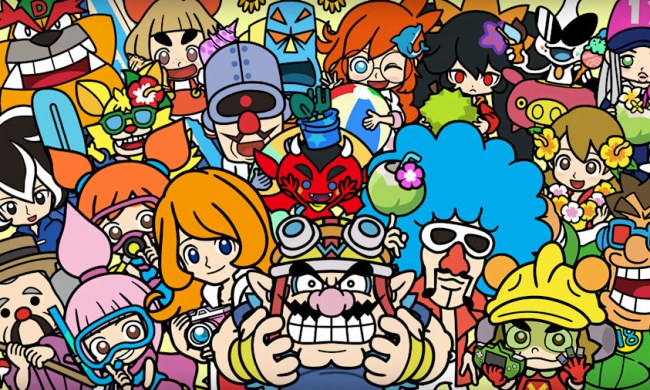Shortly after launch, Nintendo Switch owners started noticing a problem. Their thumbstick would start moving without any input. Known as Joy-Con drift, the design defect has plagued countless Switch systems and spurred multiple class-action lawsuits. That said, most players can fix the problem themselves. Here’s how to fix Joy-Con drift on the Nintendo Switch.
More Nintendo Switch
- Common Nintendo Switch problems, and how to fix them
- The best Nintendo Switch exclusives
- The best Nintendo Switch games
What is Joy-Con drift?

Joy-Con drift is an issue where your thumbstick will move without you touching it. The physical stick won’t move, but the Switch will pick up an input. Even the most minor drifting issues are unreasonably annoying, as you have to fight with your thumbstick to center your camera and move in the direction you want to go.
Although thumbstick drift isn’t a new problem, the Joy-Con issue is widespread. Three class-action lawsuits have been filed since 2019, and all of them are still wrapped up in the courts. The lawsuits show that steel brushes against carbon when you move the thumbstick back and forth, accelerating wear and tear and causing the thumbstick to drift.
Thankfully, you can fix Joy-Con drift with a few simple steps. If you’re still having problems after following the steps below, you can send your Joy-Con in for repair or submit your information to one of the lawsuits (you’ll have to order a replacement, then).
How to fix Joy-Con drift
You don’t need to throw out your Joy-Con if it’s drifting. There are a few easy steps you can take to fix Joy-Con drift without any technical knowledge or screwdrivers. All you need is your Switch, the misbehaving Joy-Con, and the ability to poke around in your system settings.
Update your system software

Before doing anything else, make sure your system and Joy-Con firmware are up to date. Starting with your system, select System Settings from the Switch home screen and scroll down to System. There, select System Update. Your Switch will automatically search for a new update, and it will ask you to download the update if there is one. Your Nintendo Switch should perform system updates automatically. If you’re behind, scroll down and turn Auto-Update Software to On to automatically update your software in the future.
Back out of the System menu and scroll up to Controllers and Sensors. Scroll down a bit and select Update Controllers. The Switch can only update controllers that are attached to the body, so make sure that your problematic Joy-Con is connected. Your Switch will detect both Joy-Cons and attempt to update them.
Although these two steps alone won’t fix all Joy-Con drift problems, it’s important to work with the latest software. Get this step out of the way first so you don’t have to second-guess later steps.
Calibrate the thumbstick

If you have a minor drifting problem or the issue is intermittent, you can fix your Joy-Con by recalibrating it. From the home screen, select System Settings and scroll down to Controllers and Sensors. There, select Calibrate Control Sticks.
Select the Joy-Con you want to calibrate on the next screen by pressing down the thumbstick. Your Switch will show your thumbstick inputs on the next screen. A green cross means you aren’t touching the controller, while a green circle means you are touching it. If you see a green circle or the marker is moving without you touching the thumbstick, your Joy-Con is drifting. Press X on your Switch to recalibrate it.
Recalibrating is easy. Follow the steps by moving your thumbstick to each side and moving it around in a circle a couple of times. After that, pop back into the menu to check your inputs. If you’re still having problems, move on to the next step.
Clean your Joy-Con
A common cause of Joy-Con drift is a dirty thumbstick. Dust, crumbs, and other debris can get lodged under the thumbstick, adding more weight in a certain direction and causing a minor drift in that direction.
Detach your Joy-Con and grab a can of compressed air. Push the thumbstick up and slowly move it around in a circle, following behind with compressed air. Use the included straw to direct the air and point it away from the thumbstick to push debris out (not deeper in).
Next, grab a cotton swab and some isopropyl alcohol. Lightly dip the cotton swab into the alcohol (make sure it isn’t dripping). Push up the thumbstick and follow the same process for compressed air, following with the cotton swab on the bottom half of the thumbstick as you move. You need just a thin layer of isopropyl alcohol. After you’re done applying, rotate the thumbstick a few more times.
That’s it for cleaning. Although you can use a toothpick with full-size controllers to fetch out a large piece of debris, there isn’t enough room on the Joy-Con. You could damage your Joy-Con beyond repair, so we don’t recommend pushing things beyond the two cleaning steps above.
Replace the thumbstick
If the three steps above didn’t work, we recommend ordering a new Joy-Con or sending yours in for a replacement (instructions on how to do that below). If you don’t mind living on the edge, you can try to replace the thumbstick yourself. Keep in mind that simply opening your Joy-Con will void your warranty and keep you from getting a free replacement in the future.
Joy-Cons use a generic thumbstick that you can get on Amazon. Many kits also come with a few special screwdrivers, which you’ll need to dismantle your Joy-Con. These kits come with step-by-step instructions, but we recommend keeping the Nintendo Switch teardown guide from iFixIt handy. We have a few tips if you want to attempt a do-it-yourself (DIY) repair, though.
First, be very careful with the screws on the back of your Joy-Con. Nintendo uses a special head type and soft metal, making it very easy to strip the screws. There are several small screws inside the Joy-Con that are easy to lose track of. Draw a basic diagram on a piece of paper and place the screws in the correct spot to make reassembly easier.
Our most important tip, though, is to not attempt a repair unless you’re comfortable losing your Joy-Con. Fragile ribbon cables connect all of the parts inside the Joy-Con, and it’s easy to damage these cables during a repair. It’s possible to replace the thumbstick in your Joy-Con, but it’s far from a basic repair.
How to get a Joy-Con drift replacement

Nintendo offers free Joy-Con repairs to customers. Fill out the online request form to start the support process. All you need is the number of Joy-Cons you’re sending in (limited to four based on battery regulations in the mail) and your Switch’s serial number. Nintendo will attempt to repair your Joy-Con, but if that isn’t possible, you’ll receive a replacement. Unfortunately, replacements are only offered in the Switch standard gray, neon blue, or neon red color schemes.
It could take several weeks for your repair to come back. If you’re anxious to keep playing, you can order a Joy-Con replacement. Nintendo offers Joy-Cons in sets
(usually with unique color schemes) but also as individual units. You can pick up a left or right Joy-Con for around $40.



